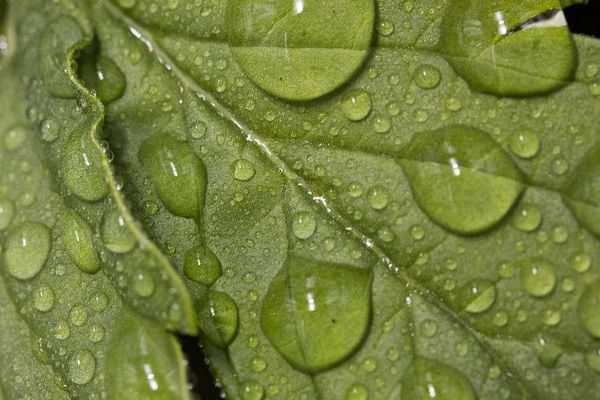- In the same way that we human beings need nourishment and a balanced diet for their bodies to function properly, plants also need certain "foods" to develop their life cycle to its full potential.
- Think about fertilising your cannabis plants as you would a person's diet. One who suffers from malnutrition when young can be stricken with health problems that may become chronic.
- With plants more or less the same thing is true: shortcomings or deficiencies of certain nutrients may be responsible for a poor harvest, and a weak and frail plant will produce fewer flowers, among other things.
- Thus, today we will explain the nutrients that are essential to your marijuana plants and how to identify deficiencies of them.

Nutrients are elements essential to the plant's life, absorbed through the soil, or nutrient solutions, in the case of hydroponic systems. Nutrients are classified into three categories: primary nutrients, secondary nutrients and micronutrients. Each, in turn, may be mobile or immobile. Knowing this information will be of great help in determining what is missing from or what your plants have too much of. Let's see why:
- Mobile nutrients: these are those that can move from one part to another of the plant, as required. For example, if a plant is suffering from a deficiency of a mobile nutrient, the amount of this element accumulated in old leaves moves to new leaves in order to fill this gap, which is why the first signs that something is wrong are manifested on the oldest leaves.
- Immobile nutrients: once assimilated by the plant they remain in the same place. They don't move. Thus, symptoms of deficiencies in immobile nutrients will appear in young leaves, generally located at the top of the plant.
Now that you know the difference between mobile and immobile nutrients, let's look at the three categories:
Primary Nutrients
Nitrogen (N) -mobile
The cannabis plant needs high levels of nitrogen, especially in its vegetative growth phase, as it is responsible for regulating the production of proteins and for the growth of leaves and stems, reflected in the plant's size and general vigour.
Process symptomatic of a nitrogen deficiency in the cannabis plant: this nutrient deficiency often results in a process called chlorosis, leading to yellowing and the progressive loss of leaf colour, while the veins remain green:
- Older leaves turn yellow
- The most affected leaves turn yellow and die completely
- The petioles (leaf stalks) may become a reddish purple
Phosphorus (P) -mobile
The cannabis plant requires more of this element during the germination and flowering phases (also when they are seedlings, when cuttings are done. It is an essential nutrient for photosynthesis and is related to resin production.
Phosphorus deficiency process in the cannabis plant:
- The plant's growth slows
- The leaves darken and dark brown spots appear
- The petioles turn reddish purple
- The tips of the older leaves darken and curl down downwards.
Potassium (K) -mobile
This is an important nutrient in all phases of the cannabis life cycle, as it helps the plant to resist bacteria and mould. It also increases chlorophyll levels and helps regulate stomatal opening, so it is an element involved in the plant's use of light and air.
Process symptomatic of a potassium deficiency in the cannabis plant:
- The branches are weakened
- The tips and edges of older leaves develop rust-coloured dots that spread as the leaf turns yellow.
- The tips of the leaves curl upwards
- The leaves will rot and die
Secondary nutrients
Magnesium (Mg) -mobile
Magnesium plays an important role in the light energy absorption process.
Process symptomatic of a magnesium deficiency in the cannabis plant:
- The appearance of yellow areas between the veins of the leaves and rust-coloured spots on the older leaves
- The tips of the leaves darken and fold upwards
- Speckles and the leaf's yellowing generally increase
Calcium (Ca) –immobile
Calcium is very important at the cellular level for the cannabis plant, as it is involved in its growth.
Process symptomatic of a calcium deficiency in the cannabis plant:
- The development of the plant slows and the young leaves turn a dark green
- Flower production decreases and significantly slows dow
Sulphur (S) -immobile
This nutrient is essential for the production of certain hormones and vitamins necessary to the cannabis plant.
Process symptomatic of a sulphur deficiency in the cannabis plant:
- As in the case of a lack of nitrogen, a sulphur deficiency often results in the appearance of chlorosis on the leaves. In an advanced stage the petioles also turn reddish purple.
- If not remedied, as the phosphorus deficiency progresses, the leaves turn a bright yellow and die.
Micronutrients
Zinc (Zn) -mobile
This nutrient, in conjunction with other elements, regulates the production of chlorophyll in the plant.
Process symptomatic of a zinc deficiency in the cannabis plant:
- Chlorotic leaves
- New leaves are weak and thin
- The tips of the leaves are "burned"
- The production of flowers and leaves stops
Manganese (Mn) -immobile
Along with iron, manganese is involved in chlorophyll production processes.
Process symptomatic of a manganese deficiency in the cannabis plant:
- Chlorosis in young leaves
- Chlorosis in older leaves
- Dry and dead areas may appear on the most affected leaves
Iron (Fe) -immobile
This nutrient is essential for the enzyme systems of the plant and is also involved in the photosynthesis and chlorophyll production process.
Process symptomatic of an iron deficiency in the cannabis plant:
- New shoots and young leaves take on a lighter green colour than normal
- Chlorosis spreads to other leaves
- The leaves become necrotic and die
Boron (B) -immobile
This element contributes to the absorption of calcium and other functions.
Process symptomatic of a boron deficiency in the cannabis plant:
- The ends of the stems and roots grow abnormally
- New shoots appear "burned"
- Major shoots curl up
- The edges of the leaves become discoloured and dead areas appear
- The interior of the roots softens, which can lead to the onset of diseases.
Chlorine/ Chloride (Cl) -immobile
Chlorine, in chloride form, is very important for photosynthesis and cell division in roots and foliage.
Process symptomatic of a chloride deficiency in the cannabis plant:
- Young leaves turn pale
- Roots grow stout
- As the deficiency worsens, the leaves develop a characteristic tanned colour
- They develop thick tips and stop growing
Cobalt (Co) -immobile
Very important for nitrogen absorption.
A cobalt deficiency leads to problems similar to those of a nitrogen deficiency.
Copper (Cu) –immobile
This micronutrient is concentrated in the plant's roots.
A process symptomatic of a copper deficiency in the cannabis plant:
- The young leaves and shoots wither
- The tips and edges of the leaves develop necrosis
- The plant's growth slows and flower production decreases
Molybdenum (Mb) -immobile
It is involved in the processes that turns nitrate into ammonium.
It is exceedingly rare for there to be deficiencies of this micronutrient in cannabis plants, and when there are it leads to a lack of nitrogen.
Silicon (Si) -immobile
It is absorbed by the cannabis plant as silicic acid and helps to balance iron and magnesium levels.
Deficiencies or excesses do not cause complications.



Comments from our readers
Read comments in other languages:
Did you like this post?
Your opinion about our seeds is very important to us and can help other users a lot (your email address won't be made public).